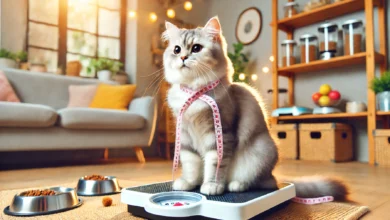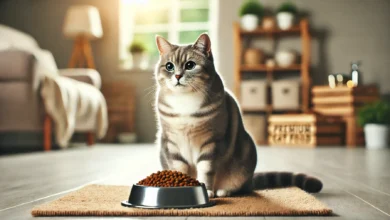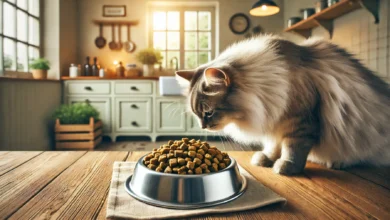How to Transition to New Cat Food Safely
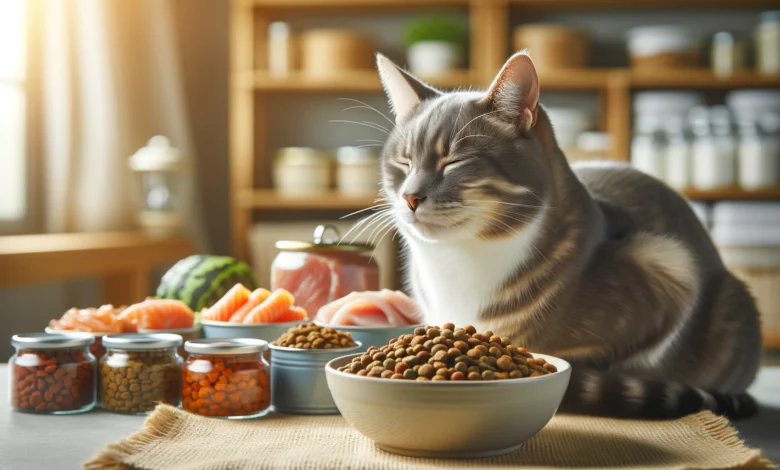
Switching your cat to a different kind of food may sound intimidating, not only for you but more so for your furry little friend who has been accustomed to the same kind of diet.
However, this change is at times quite necessary, whether due to health reasons, age, or even offering better nutrition.
Gradual shifting and a planned approach are the keys to making it smooth.
This article will take you through each and every step involved in introducing new cat food in a manner that will minimize stress and digestive issues for your dear pet.
Table of Contents
Understanding the Importance of Cat Food Transitioning
Changing your cat’s diet may seem simple; however, it is considerably more complicated than simply pouring new cat food into their bowl.
Cats have sensitive stomachs, and abrupt changes can cause problems like vomiting, diarrhea, or even refusal to eat.
A gradual change not only avoids such issues but also helps your cat gradually become accustomed to the new taste, texture, and nutritional composition of their food.
It’s good to understand why this is an important process in relation to your cat’s overall health.
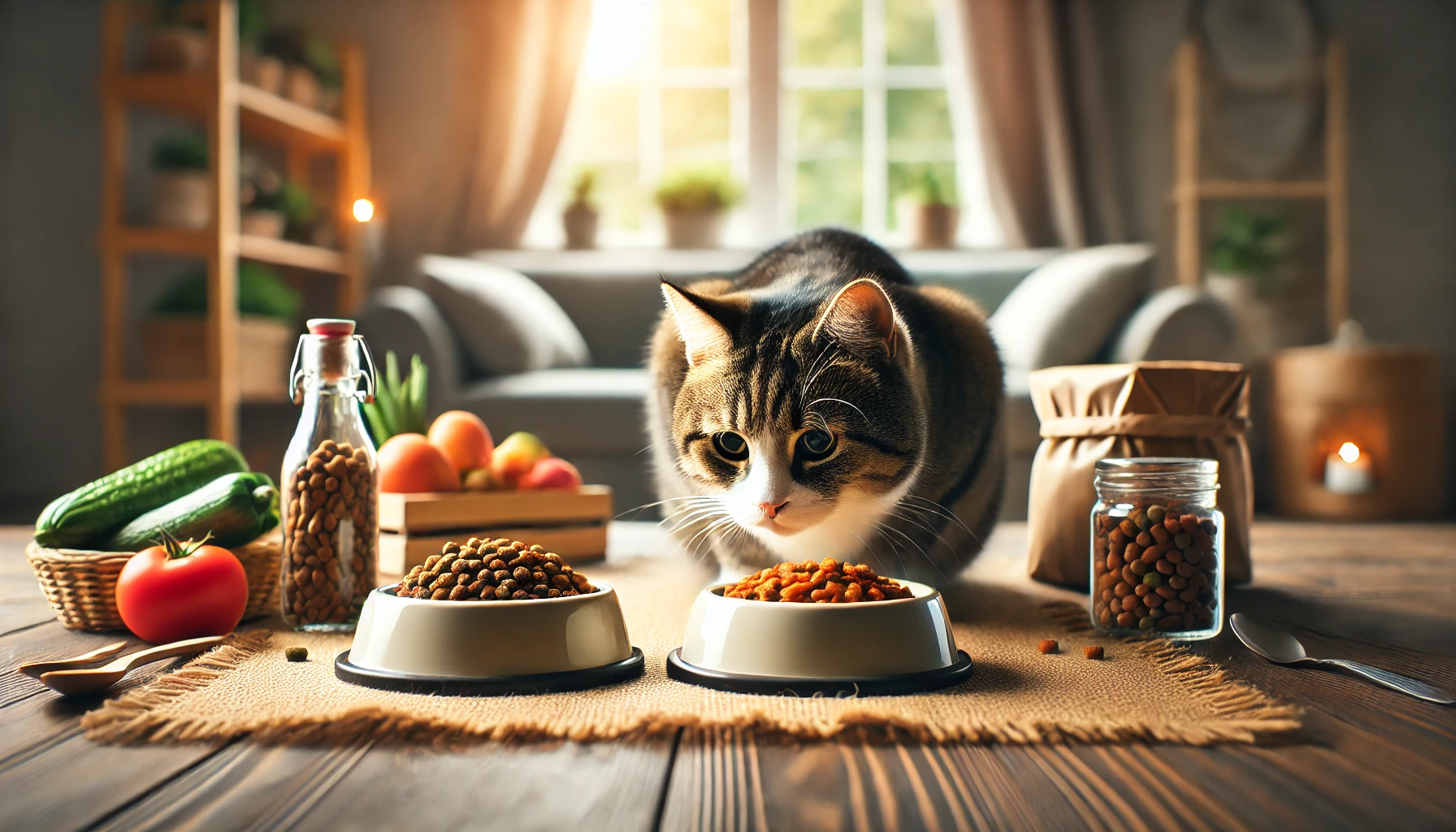
Why Gradual Change Is Important for Your Cat’s Health
Cats are generally habitual in their behavior, and this pattern is reflected in their digestive systems.
Sudden changes from one type of food to another can upset the feline digestive system, leading to anything from mild discomfort to serious health problems.
When you introduce new cat food gradually, you allow the digestive enzymes to adapt slowly to the change.
This reduces the risk of rejection or adverse reactions, allowing your cat to make a smoother transition.
- Prevents gastrointestinal problems such as diarrhea or vomiting
- Helps your cat gradually get accustomed to new flavors and textures
- Allows for better absorption of nutrients from the new cat food
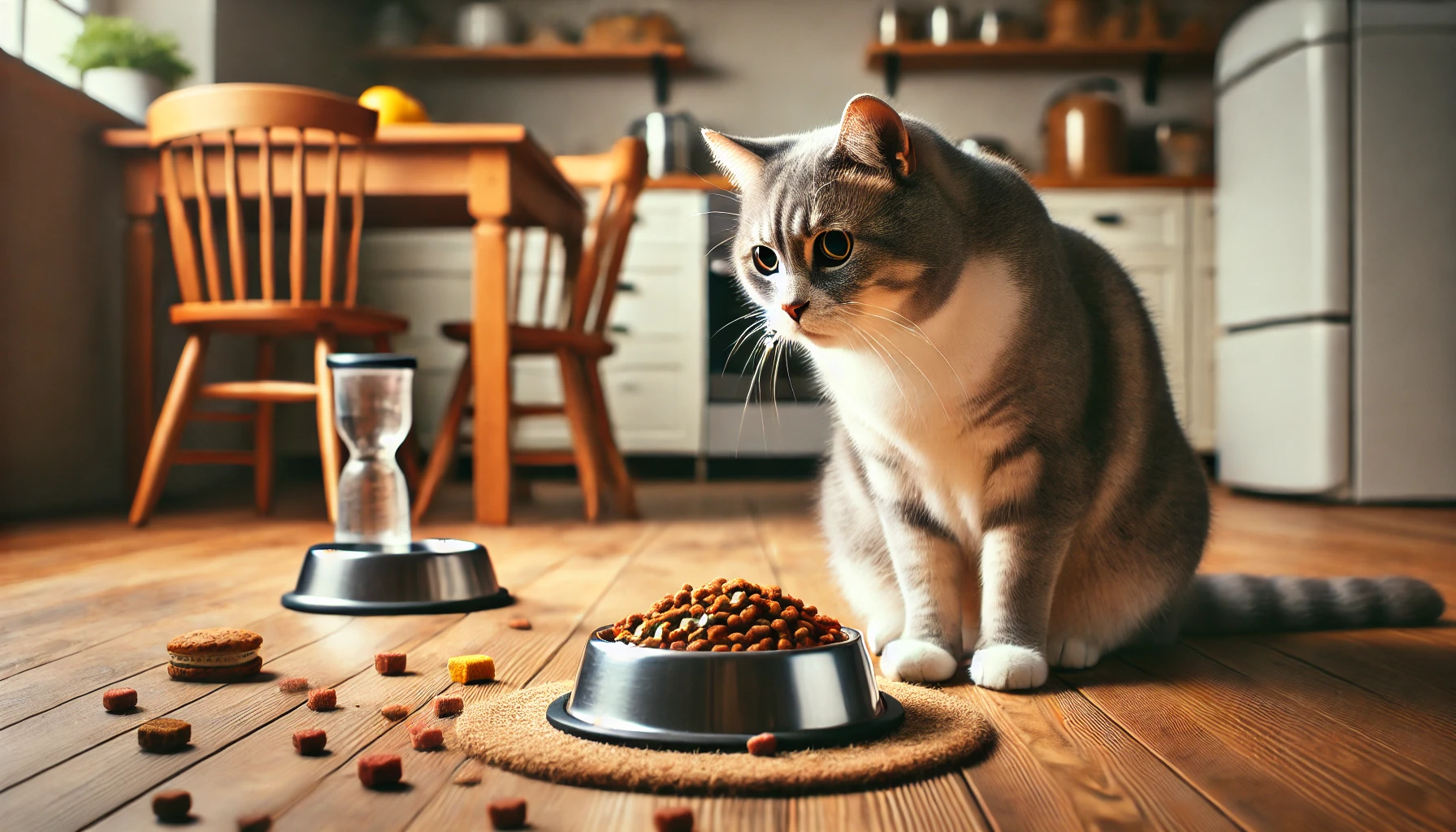
Common Issues with Sudden Diet Changes
Two of the biggest mistakes most cat owners make are changing their cat’s food too quickly.
If cats develop gastrointestinal upset after a sudden change, they may start associating this new food with discomfort, making future changes even more difficult.
Some common issues from sudden changes include:
- Vomiting due to a sudden change in diet
- Diarrhea or loose stools from poor digestion
- Refusal to eat, possibly leading to weight loss
By being aware of these risks, you can make the transition more thoughtfully and avoid causing unnecessary stress for yourself and your cat.
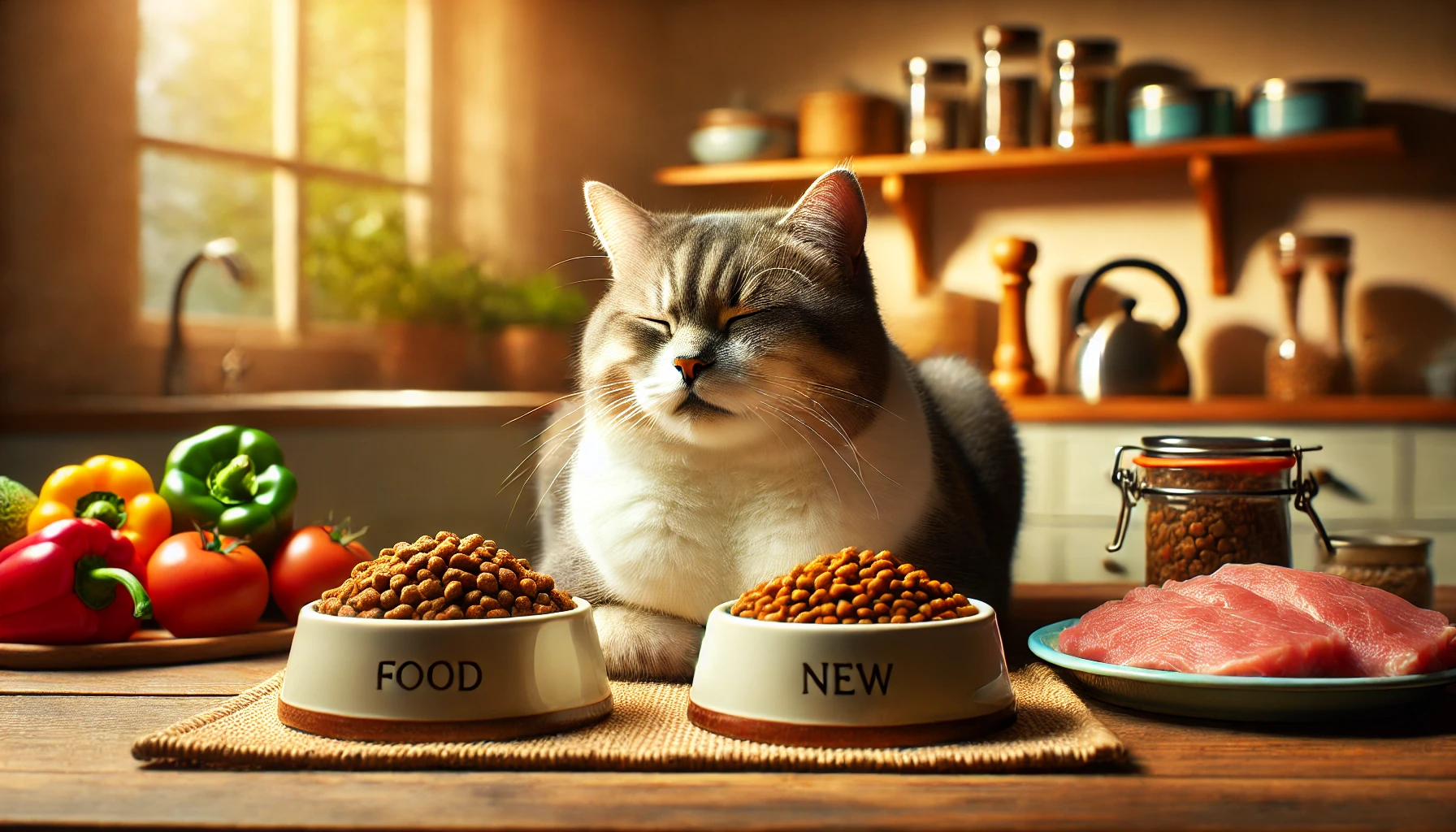
Advantages of Gradual Introduction to New Cat Food
When you introduce new cat food gradually, your cat is given time to get used to the changes in ingredients and nutrients.
This slow process minimizes the chances of your cat developing digestive problems and allows them to get used to the new food over time.
A gradual transition usually involves mixing a small proportion of the new cat food with the old food and gradually increasing the proportion of new food each day.
This will ensure that your cat adapts well and in comfort.
- Drastically reduces rejection of food and ensures your cat enjoys meals
- Supports better digestion by allowing gradual adaptation of digestive enzymes
- Avoids drastic changes in appetite and helps maintain a healthy feeding routine
Transitioning cat food gradually is crucial to avoid stress and digestive issues, ensuring a smooth and healthy process for your pet.
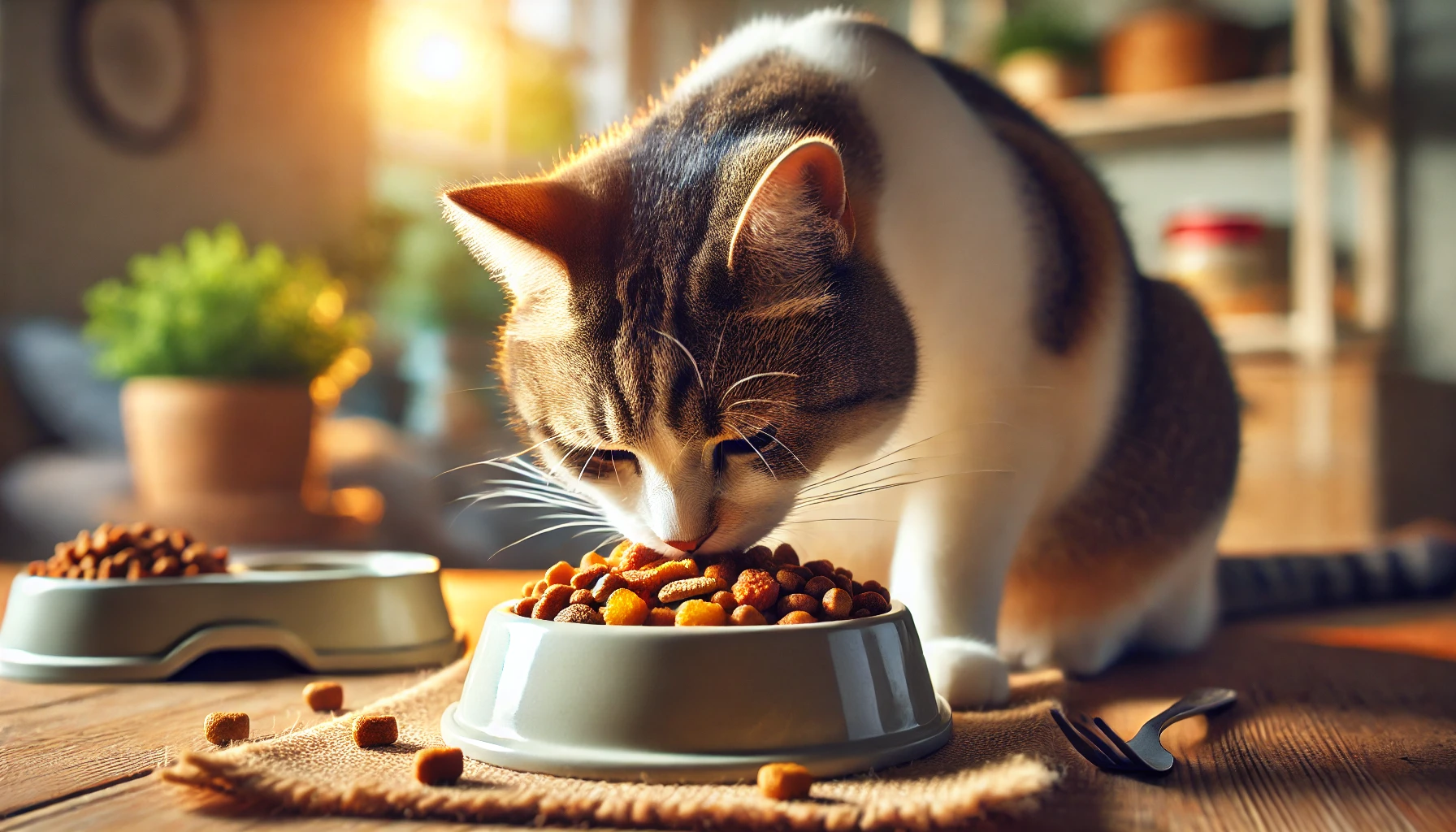
How to Safely Introduce New Cat Food
The introduction of new cat food should be systematic and done gradually to provide a smooth changeover with minimal shock to your cat’s digestive system.
Taking the necessary measures will ensure that your cat experiences minimal stress during the transition process.
Although these guidelines may seem simple, they play a crucial role in making sure the transition is not overwhelming for either you or your pet.
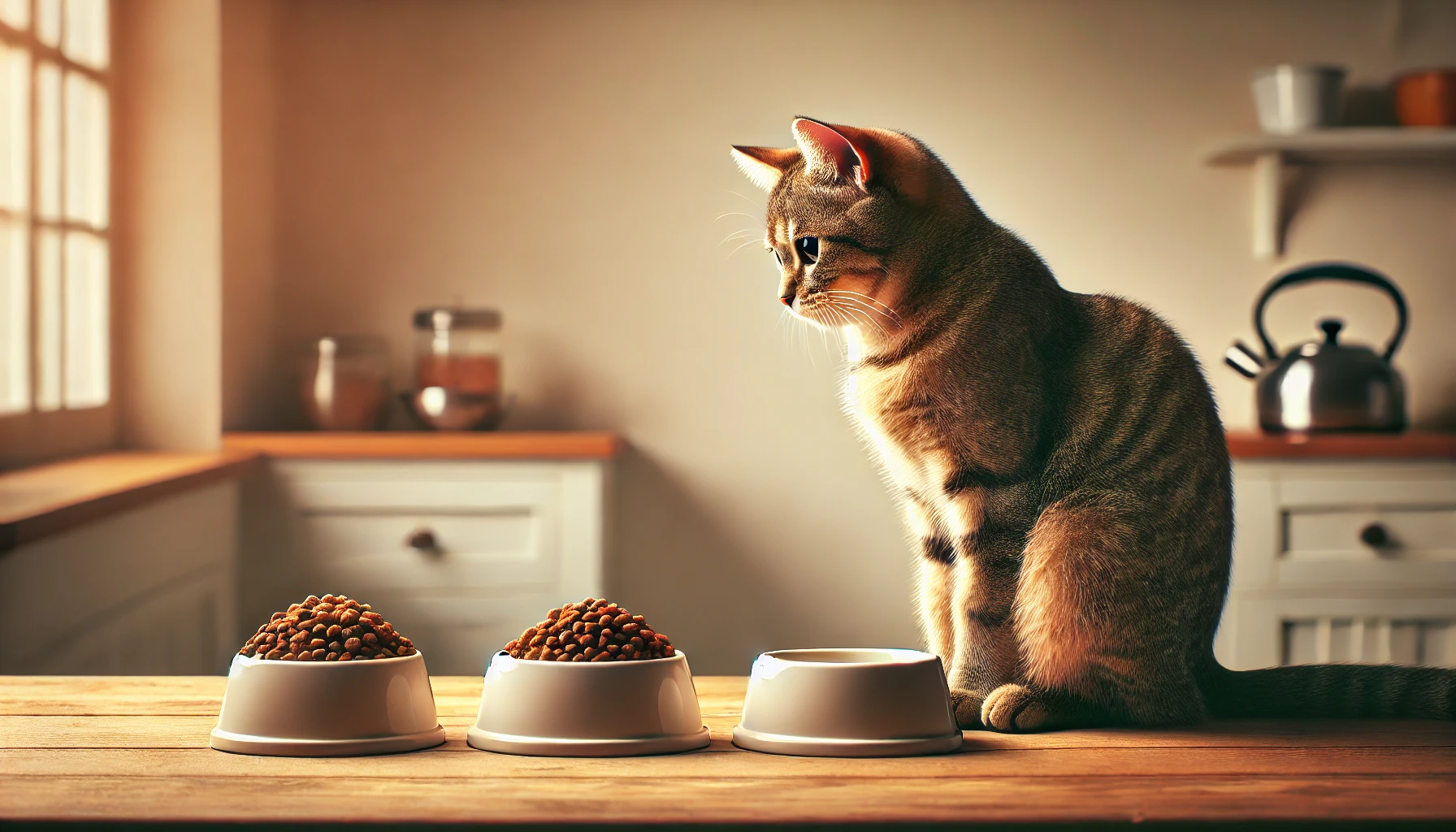
Assessing Your Cat’s Current Diet
Before switching to new cat food, it’s important to assess your cat’s current diet.
Take note of the type of food your cat currently consumes, whether it’s dry kibble, wet food, or a combination of both.
This will help you determine what nutrients, flavors, and textures your cat is used to, making the transition to new cat food easier.
Understanding your cat’s nutritional needs, age, and any health conditions will also help you select the right food for them.
- Observe how much your cat eats in one day and whether there are any gastrointestinal issues such as vomiting or loose stool.
- Consider any special dietary needs, including prescription diets or food sensitivities.
- If you’re concerned that your cat’s current diet is not providing all the necessary nutrients, consult with your veterinarian.
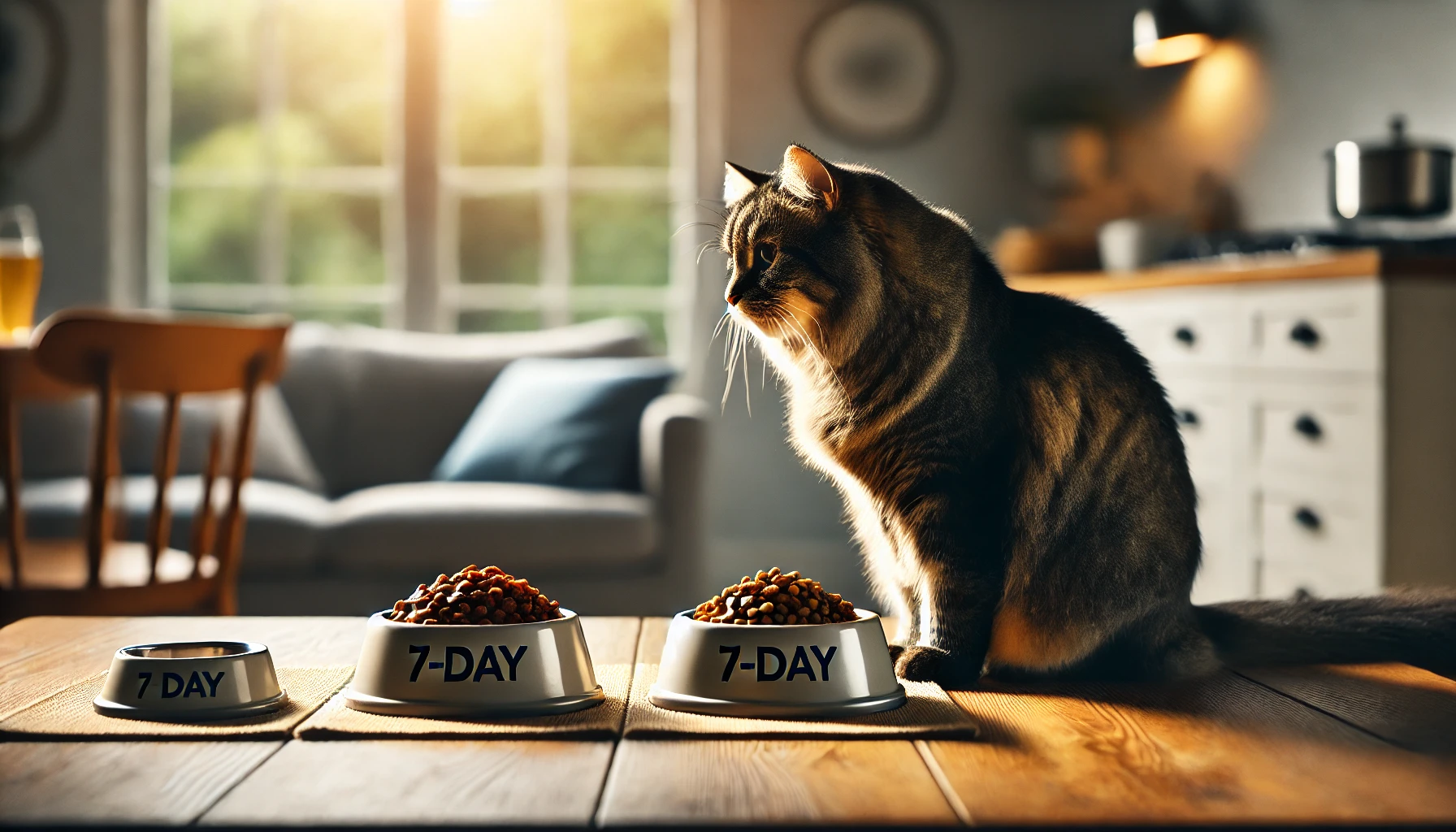
Transitioning to New Food: The 7-Day Mix-In
The best way to introduce new cat food is through a gradual transition.
Most experts recommend the 7-day transition method to help prevent digestive problems or food rejection.
Start by mixing a small portion of the new food with your cat’s current food, and gradually increase the ratio of new food while reducing the old food each day.
- Day 1-2: Mix 25% new cat food with 75% old food.
- Day 3-4: Gradually increase to 50% new food and 50% old food.
- Day 5-6: Switch to 75% new food and 25% old food.
- Day 7: Feed 100% new food.
This gradual process helps your cat’s digestive system adjust to the new cat food and can prevent issues such as vomiting or diarrhea.
If your cat shows signs of stress, such as loss of appetite or refusal to eat, consider extending the transition period or seeking advice from your vet.
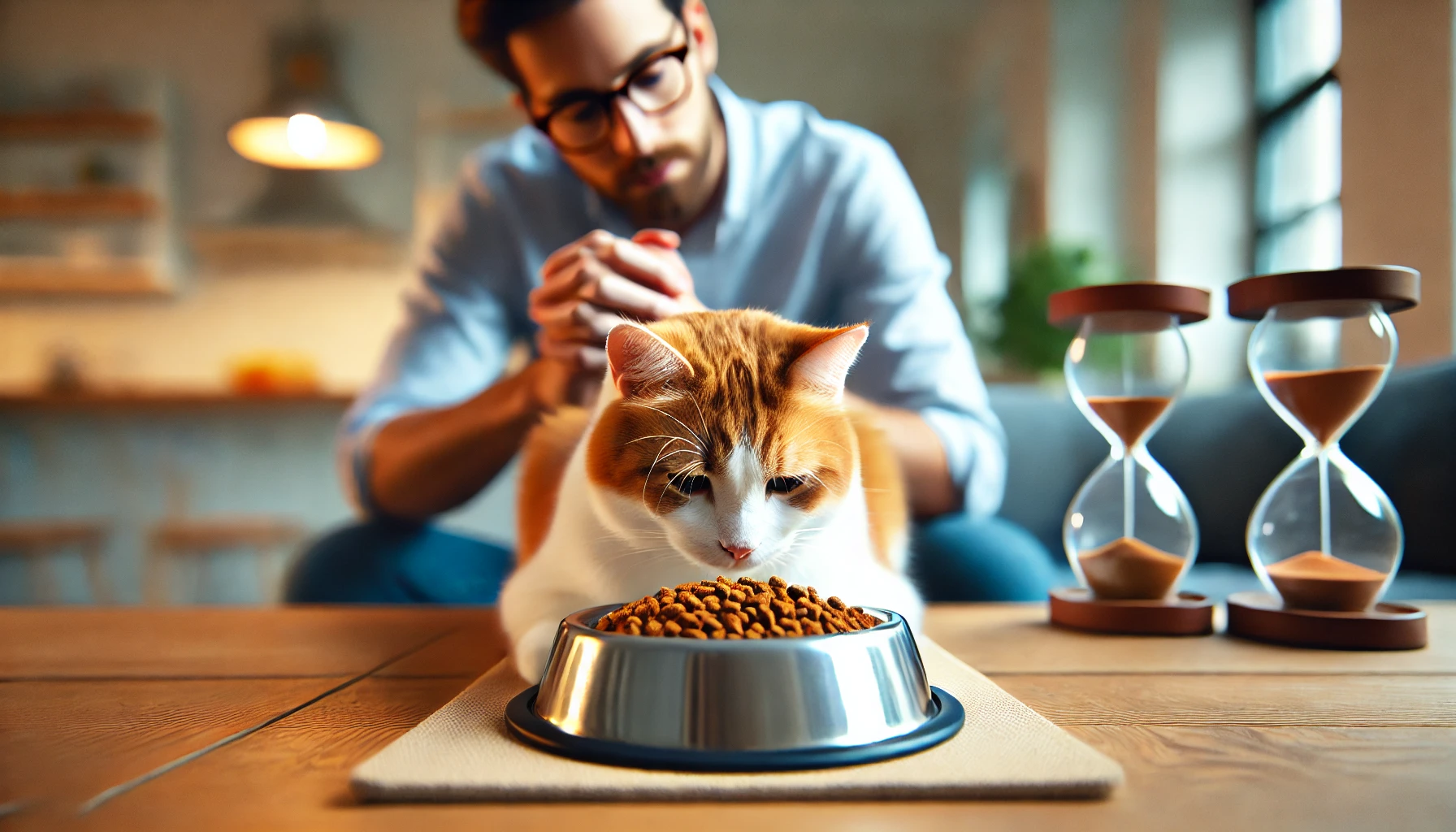
Changing Portions and Monitoring Your Cat
Throughout the transition, monitor your cat’s behavior and appetite closely.
Watch for signs of discomfort, such as lack of energy, lethargy, or changes in litter box habits.
It’s important to ensure your cat is eating well during this period, as refusal to eat can lead to weight loss and other health complications.
If your cat is not eating the new cat food after several days, you may need to adjust the transition strategy or try a different formula.
- Watch for digestive signs like vomiting or diarrhea, and slow the transition pace if these side effects occur.
- Monitor your cat’s litter box to ensure regular bowel movements and check for signs of discomfort.
- If your cat remains uninterested in the new food after the transition, consult your veterinarian for alternative options.
Each of these steps ensures that the transition to new cat food is easier and prevents your pet from experiencing undue stress or digestive issues.
Follow a planned and gradual introduction of new cat food to minimize stress and promote a healthier transition for your cat.
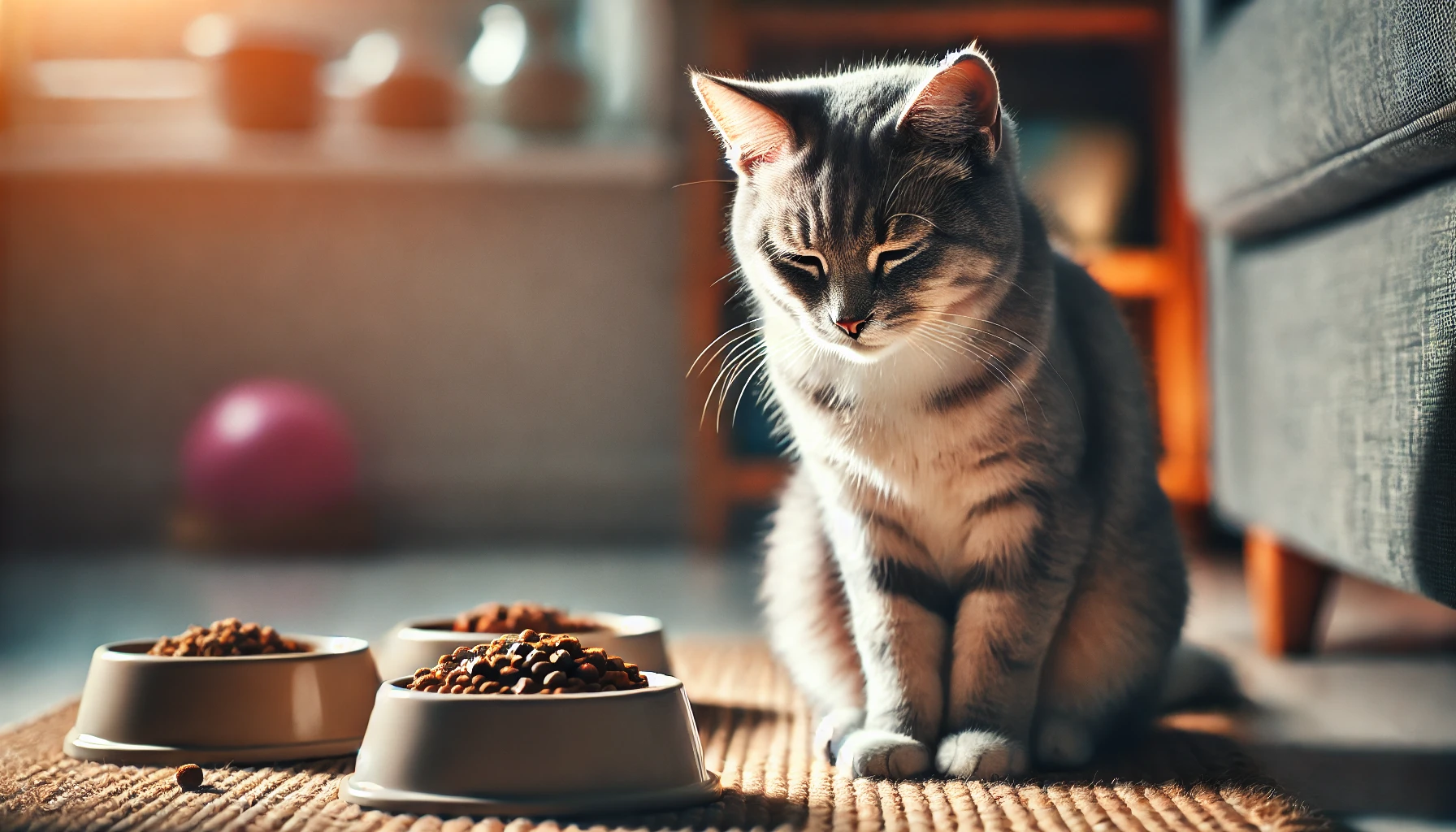
Food Sensitivity or Intolerance Signs
As you transition your cat to new cat food, be on the lookout for signs of food sensitivity or intolerance.
While most cats will adjust easily to a change in their diet, some may experience digestive issues or allergic reactions.
Early observation of these signs will help you address any problems before they escalate, ensuring your cat remains healthy and comfortable throughout the process.
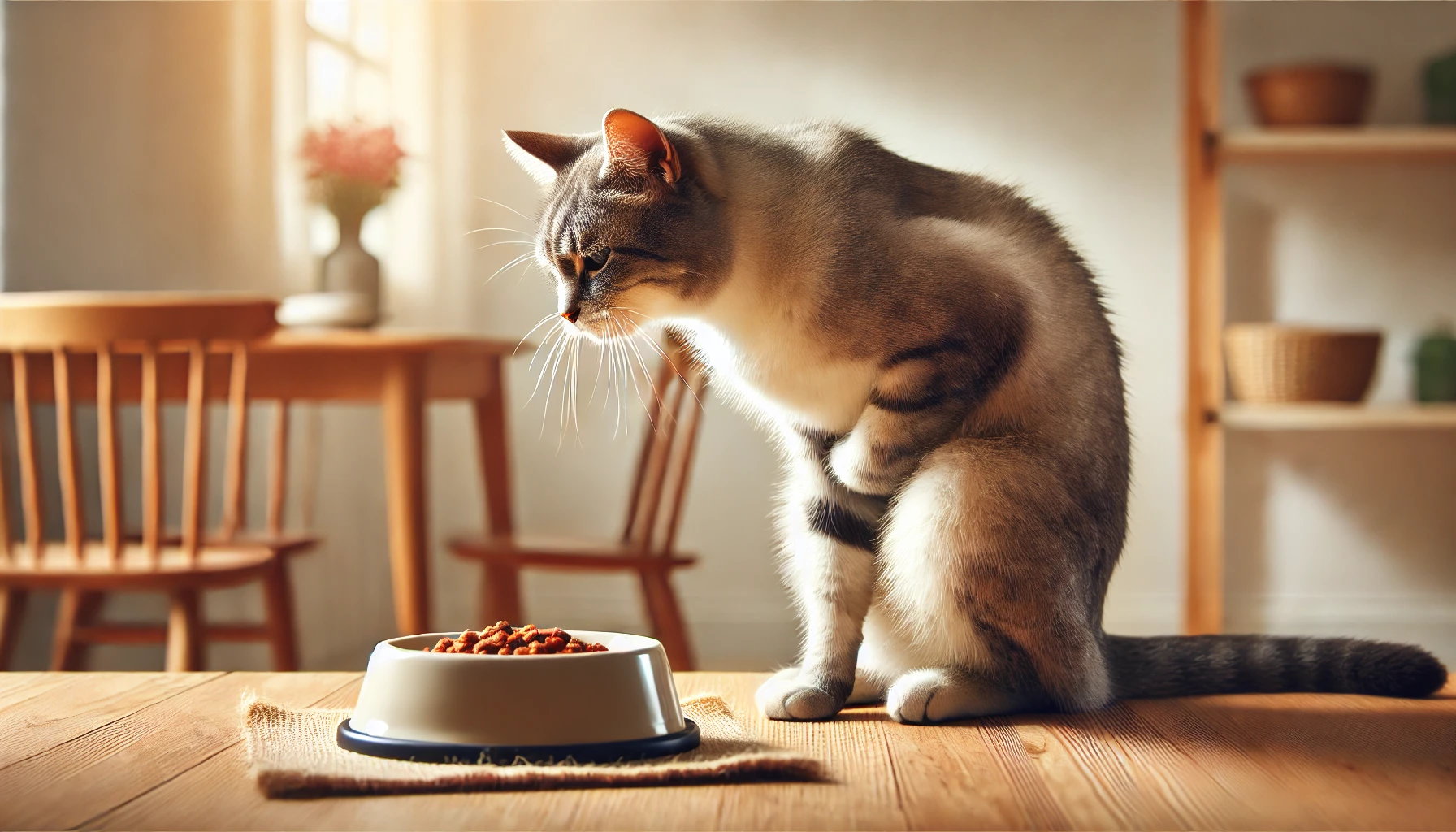
How to Identify Digestive Problems in Cats
One of the most recognizable symptoms of food intolerance is digestive upset.
If your cat’s digestive system is having difficulty adjusting to the new cat food, they may exhibit signs such as vomiting, diarrhea, or excessive gas.
These symptoms often appear within a few hours to a day after eating.
Digestive symptoms are usually not cause for alarm unless they persist for more than 48 hours, which could indicate an underlying health condition.
- Frequent vomiting after eating
- Diarrhea or loose stools
- Increased flatulence or gas
- Lack of appetite or refusal to eat
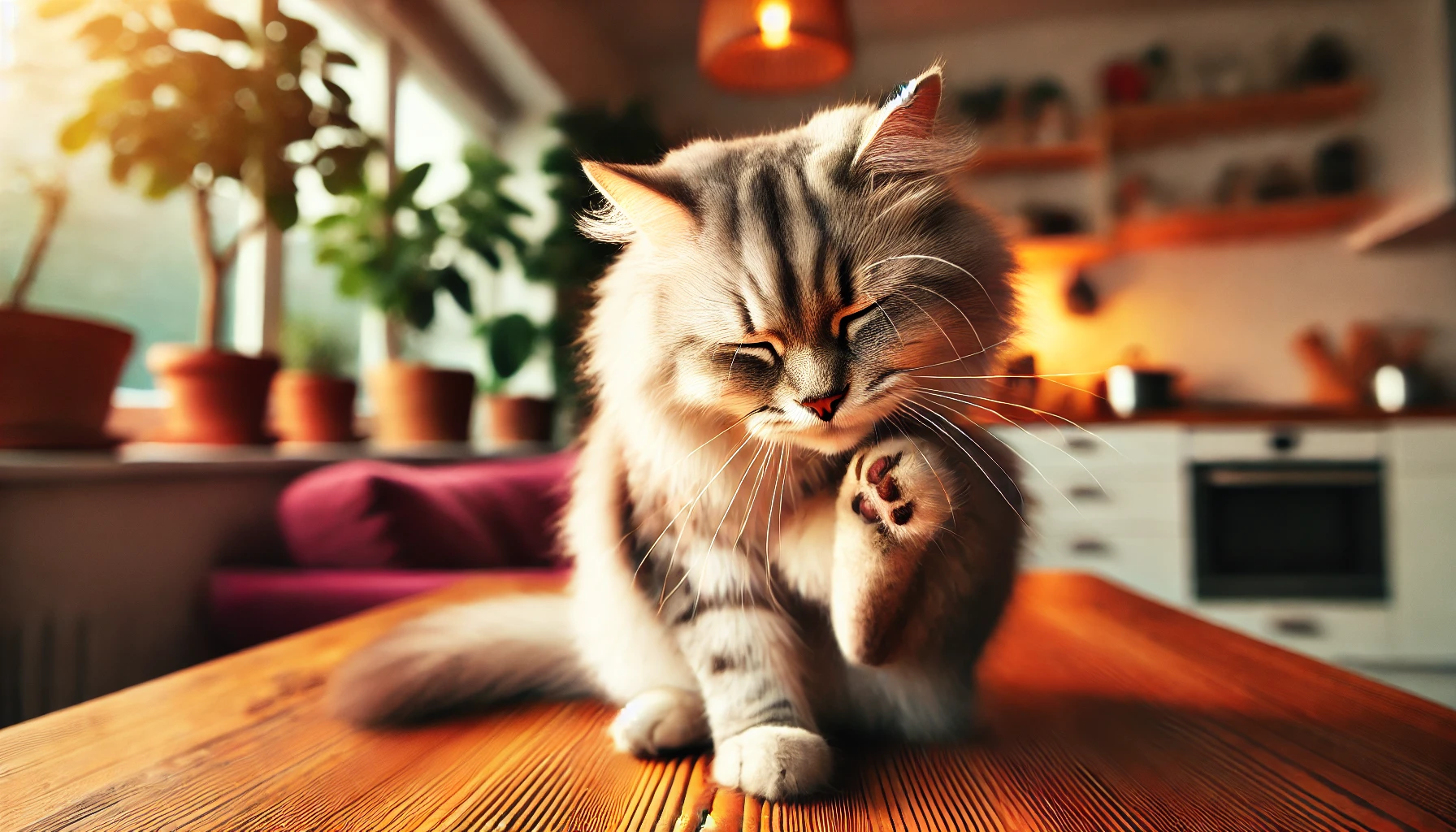
How to Recognize Allergic Reactions to New Cat Food
Sometimes, cats develop allergic reactions to new cat food.
These reactions are often caused by proteins such as chicken, beef, or fish.
Allergic reactions may not appear immediately but can develop over time as your cat is exposed to the allergen through multiple meals.
Be on the lookout for the following signs:
- Itchy skin or excessive scratching
- Red, inflamed, or irritated skin
- Hair loss or bald spots
- Swelling around the face, ears, or paws
- Recurring ear infections
If your cat shows any of these symptoms, stop feeding them the new food immediately and consult your veterinarian.
Your vet may recommend switching to a hypoallergenic diet or conducting a food elimination trial to identify the allergen.
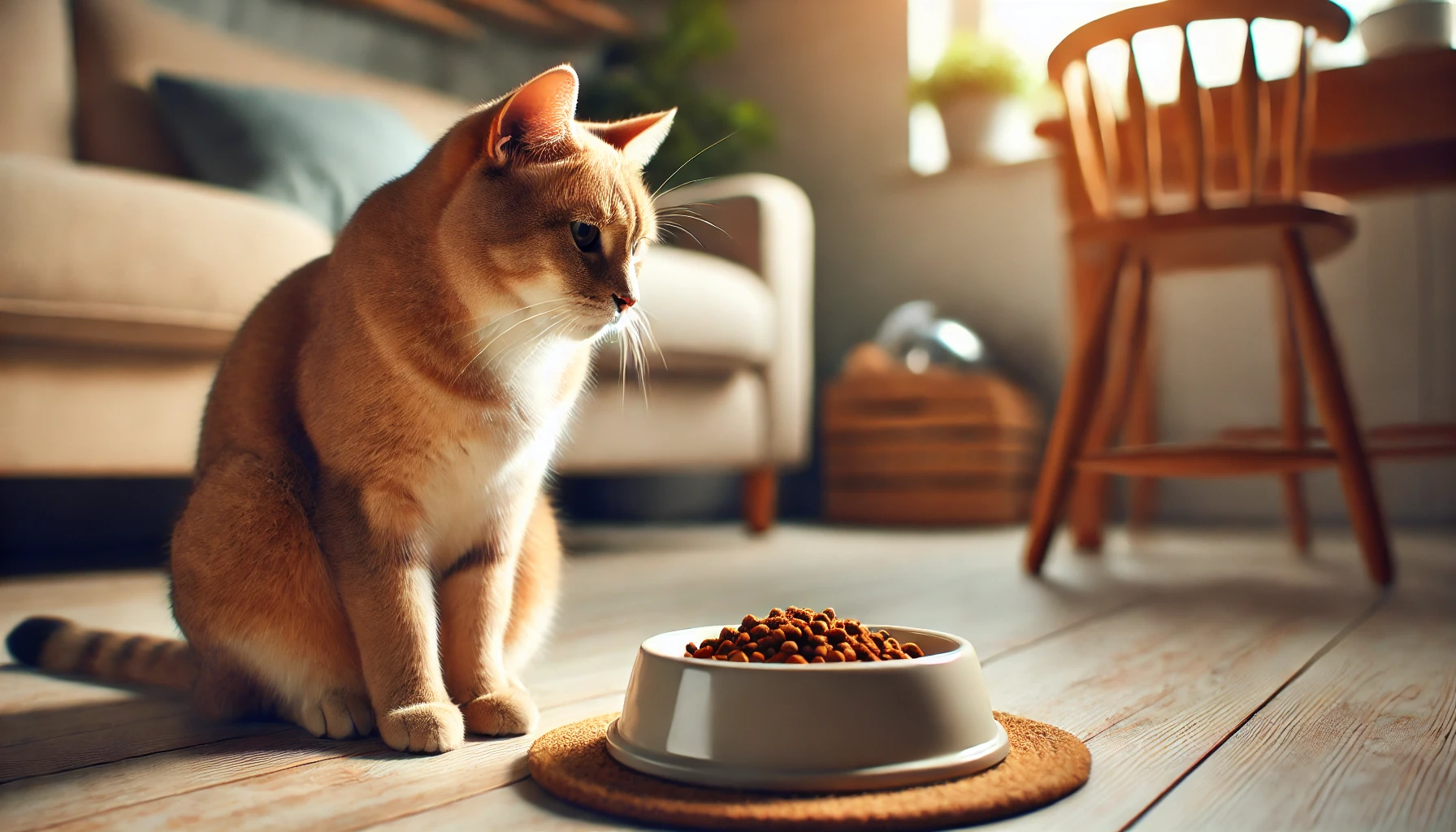
What to Do if Your Cat Won’t Eat the New Food
Some cats may refuse to eat new cat food due to its taste, texture, or smell, which is a common issue, particularly with picky eaters.
If your cat is rejecting the new food, try these strategies to encourage them to eat:
- Slightly warm the food to enhance its aroma and make it more appealing.
- Mix a small amount of the new food with the old food to create a familiar taste.
- Offer smaller, more frequent meals to help your cat gradually adjust to the new food.
If your cat continues to refuse the food, it may be a sign of a deeper issue, and you should consult your veterinarian for advice.
Paying attention to the transition and recognizing early signs of food intolerance or sensitivity will make the switch to new cat food much easier and stress-free for both you and your cat.
Be on the lookout for digestive problems or allergic reactions when transitioning to new food, and consult a vet if symptoms persist.
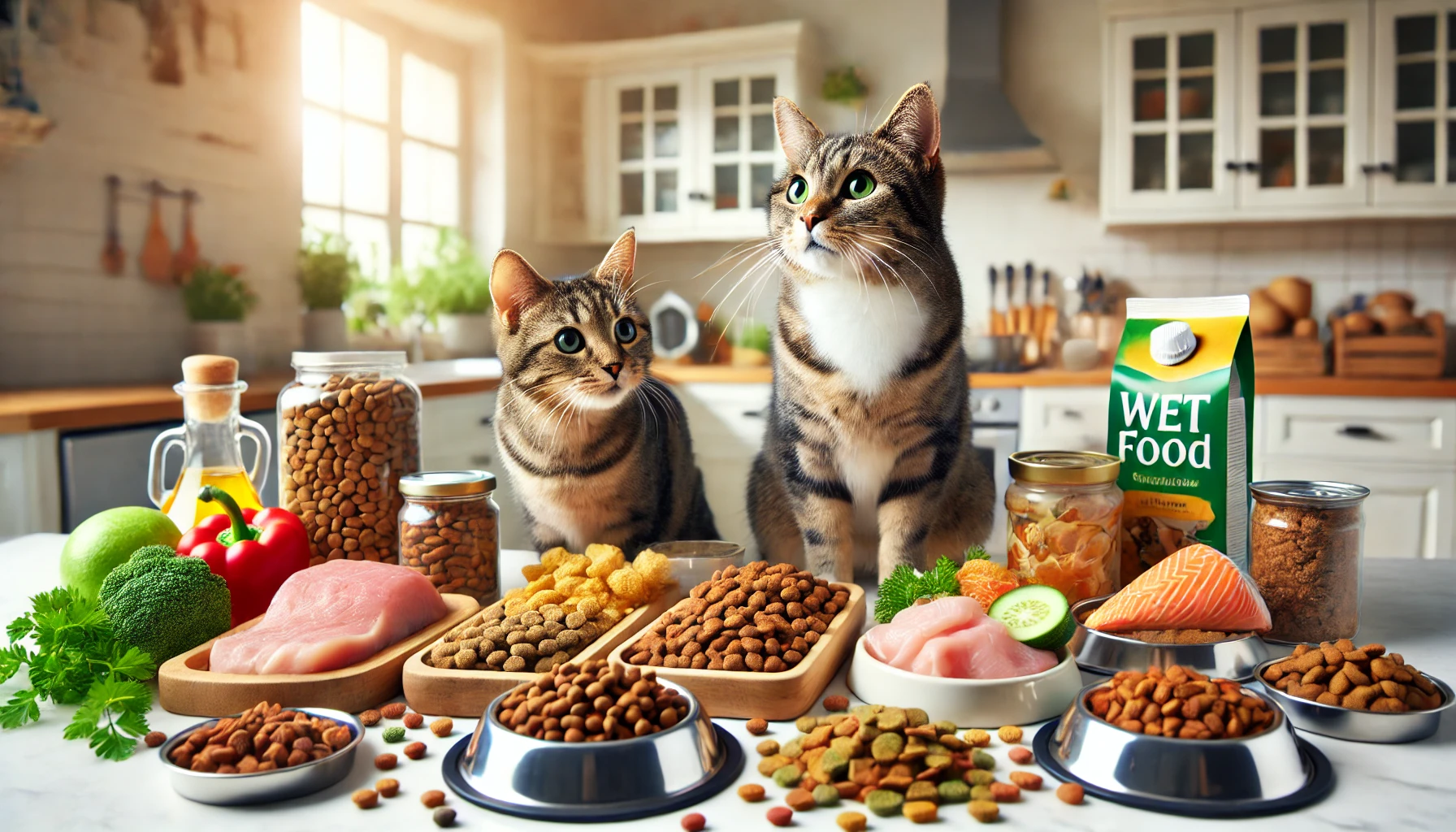
Choosing the Right New Cat Food for Your Cat
Picking the right new cat food is one of the most important things you can do to ensure your cat’s overall health and happiness.
With the myriad of choices available, it may feel overwhelming to make the right decision.
Your cat’s age, activity level, and any specific dietary needs should guide your choice.
Below are key considerations to help you choose the best new cat food for your feline friend.
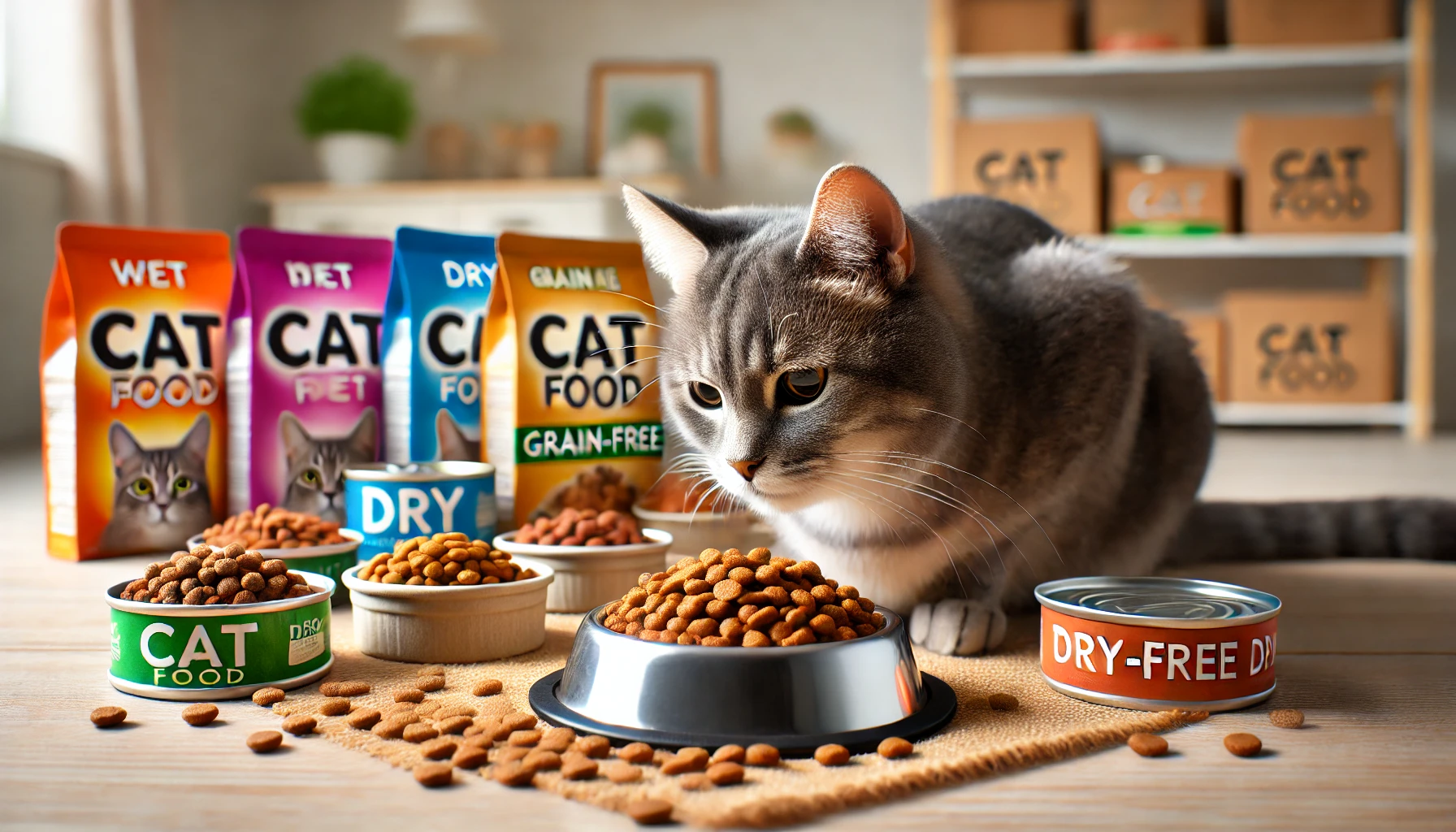
Things to Keep in Mind When Changing to New Cat Food
When choosing new cat food, there are many factors to consider.
Cats have different nutritional needs depending on their life stage, whether they are kittens, adults, or seniors.
You’ll also want to consider your cat’s activity level, weight, and any food sensitivities or health conditions they may have.
- Life stage: Kittens need food that supports growth and development, while adult and senior cats require foods specifically formulated for maintenance and health at their respective life stages.
- Activity level: Highly active cats may need higher-calorie foods, while less active cats may benefit from lower-calorie options to maintain a healthy weight.
- Health considerations: Cats with special health conditions, such as kidney disease or diabetes, require specially formulated foods. Always consult your veterinarian for recommendations on the best cat food for specific illnesses.
Knowing How to Read Labels and Nutritional Information
Reading the label on cat food packaging helps you understand what you’re feeding your cat.
The food should meet the standards set by the Association of American Feed Control Officials (AAFCO), ensuring it is nutritionally complete and balanced.
Pay close attention to the ingredient list, especially the primary source of protein.
- Primary ingredients: Look for cat food with a high-quality animal protein source, such as chicken, turkey, or fish, listed as the first ingredient.
- Grain-free or with grains: Some cats do well on grain-free diets, while others can tolerate grains without issues. Choose based on your cat’s needs and preferences.
- Artificial additives: Avoid cat food that contains artificial flavors, colors, or preservatives. Opt for natural ingredients whenever possible.
Also, note the guaranteed analysis on the package, which provides a breakdown of nutrient content, including protein, fat, fiber, and moisture percentages.
This ensures the food aligns with your cat’s dietary needs.
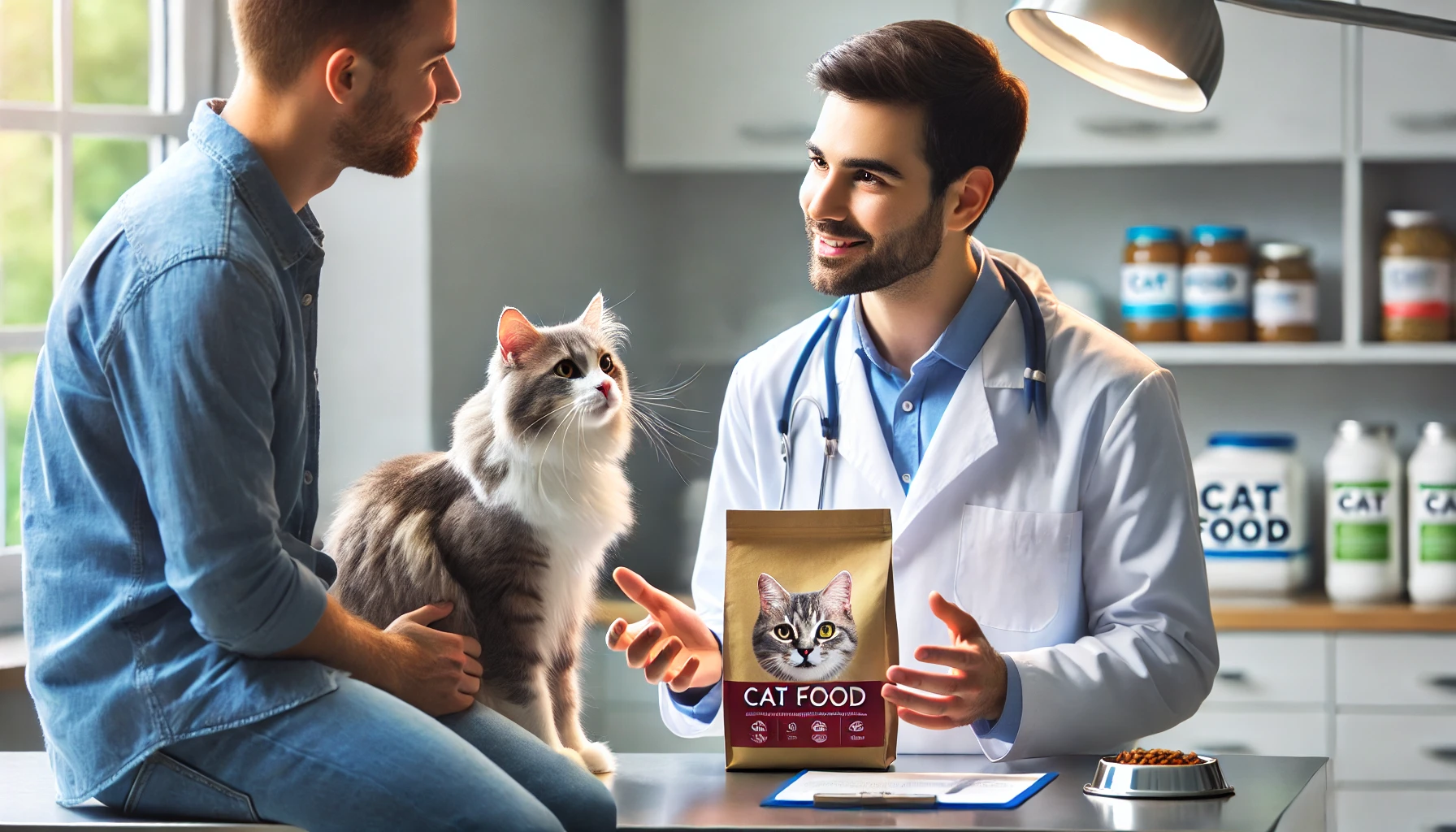
Recommendations from a Veterinarian
If you’re confused by the many choices of new cat food, your veterinarian can provide valuable guidance.
They can offer specific recommendations based on your cat’s history, age, and dietary needs.
If your cat has certain medical conditions, your vet may suggest a prescription diet or therapeutic food to address those issues.
- Veterinarians can recommend foods for a wide range of conditions, including weight management, food allergies, and urinary tract health.
- They can also suggest the best transition plan for cats with sensitive stomachs.
By considering your cat’s specific needs, carefully reading labels, and seeking advice from your vet, you can choose the best new cat food to keep your pet healthy and happy.
Selecting the appropriate new cat food based on your cat’s needs is key to ensuring a balanced diet and long-term health.
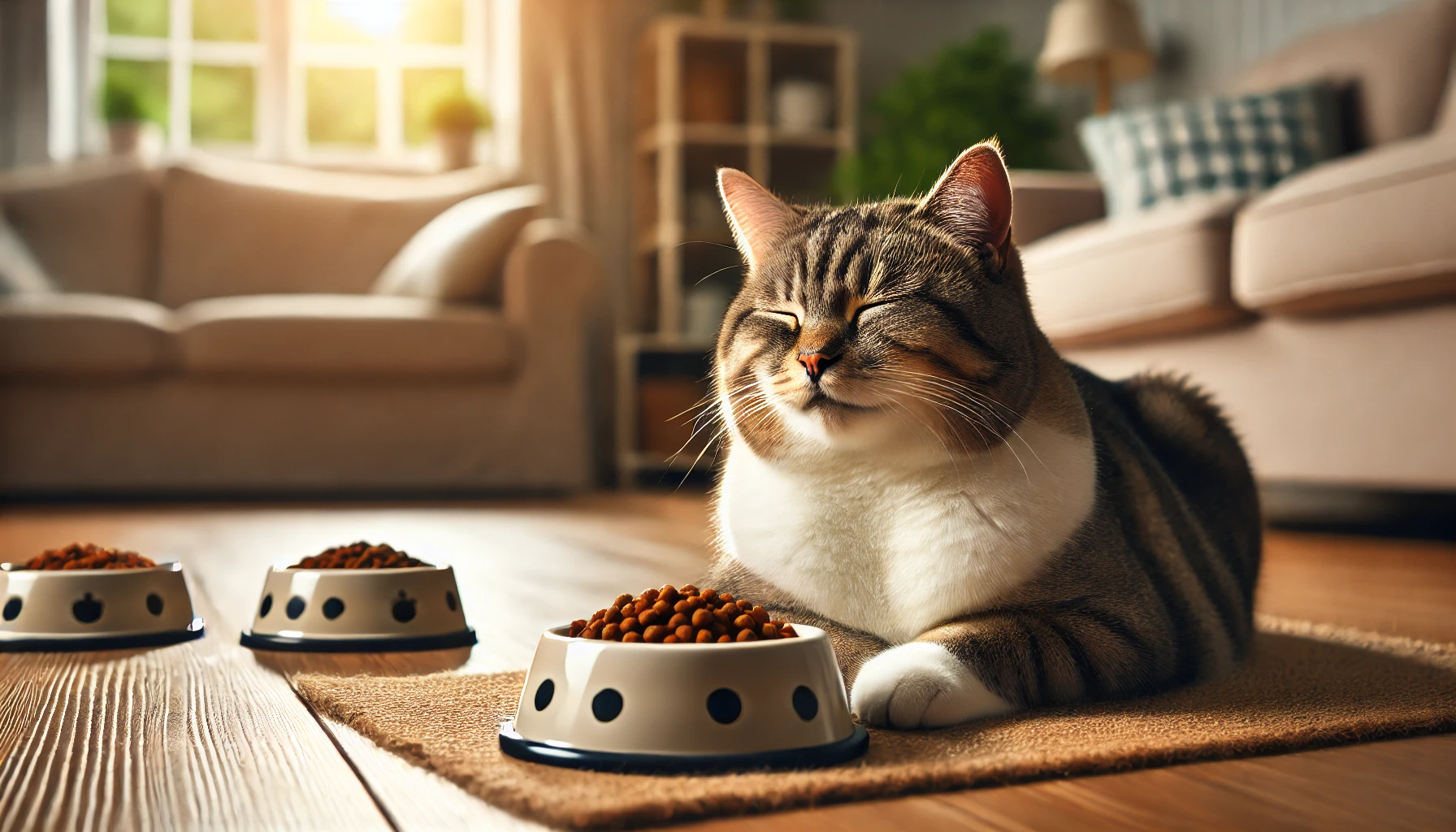
Final Thoughts on Transitioning to New Cat Food
Transitioning your cat to new cat food is a process that requires patience, attention to detail, and understanding of your cat’s unique needs.
From selecting the right food to managing the transition process, each step plays a crucial role in ensuring your cat’s long-term health and happiness.
By carefully planning and observing your cat’s reaction to their new diet, you can make this switch as smooth and stress-free as possible for both you and your feline friend.
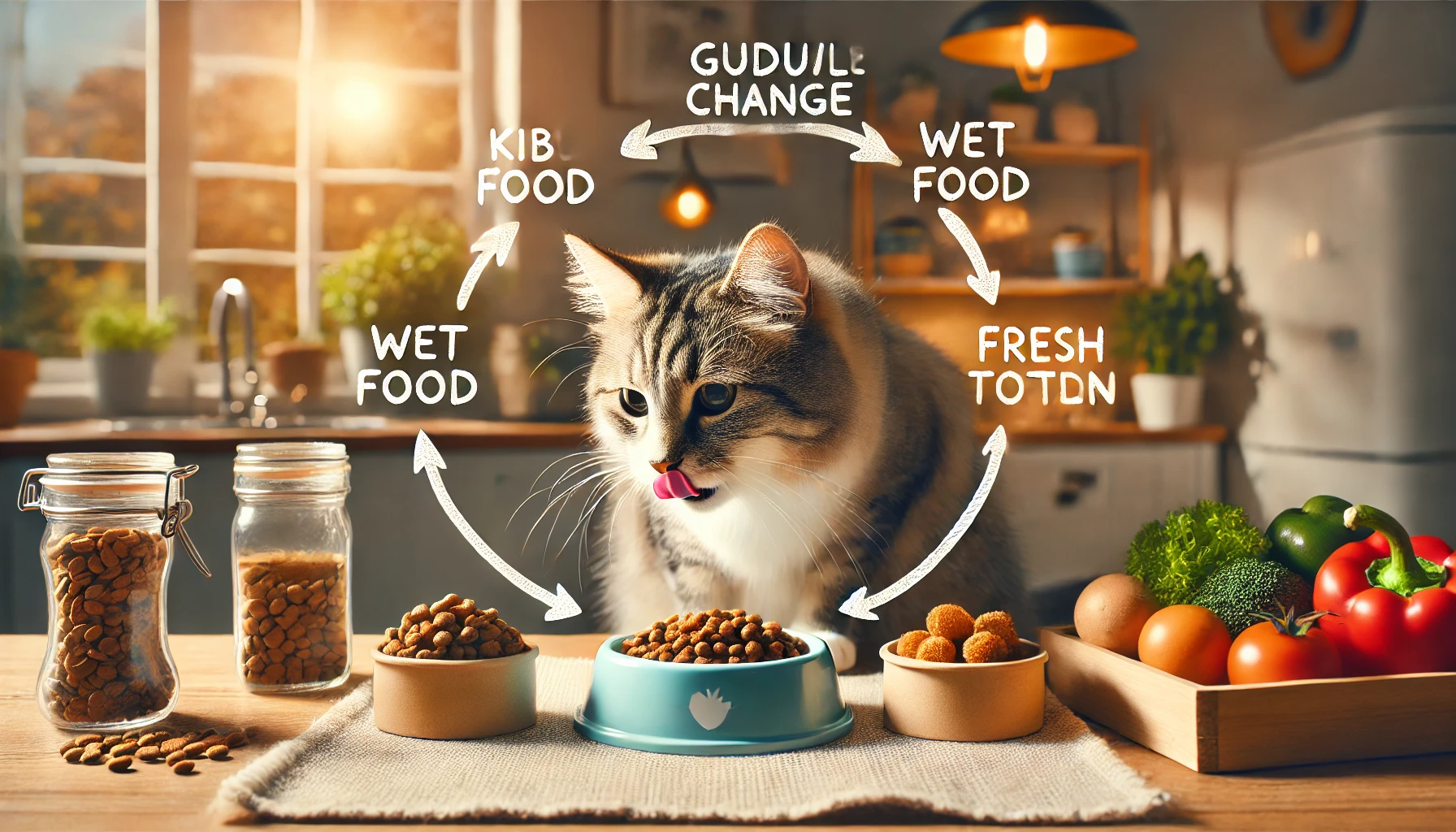
Key Takeaways for a Successful Transition
To make the transition to new cat food a success, keep these important points in mind:
- Always choose new cat food that matches your cat’s age, activity level, and any specific dietary needs or health conditions.
- Gradually introduce the new food over 7 days or more, mixing it with the old food to avoid digestive upsets.
- Monitor your cat closely for any signs of food intolerance or sensitivity, such as vomiting, diarrhea, or allergic reactions.
- Consult your veterinarian for personalized advice, especially if your cat has underlying health issues or special dietary requirements.
- Maintain a balanced diet after the transition by regularly evaluating your cat’s weight, coat condition, and energy levels.
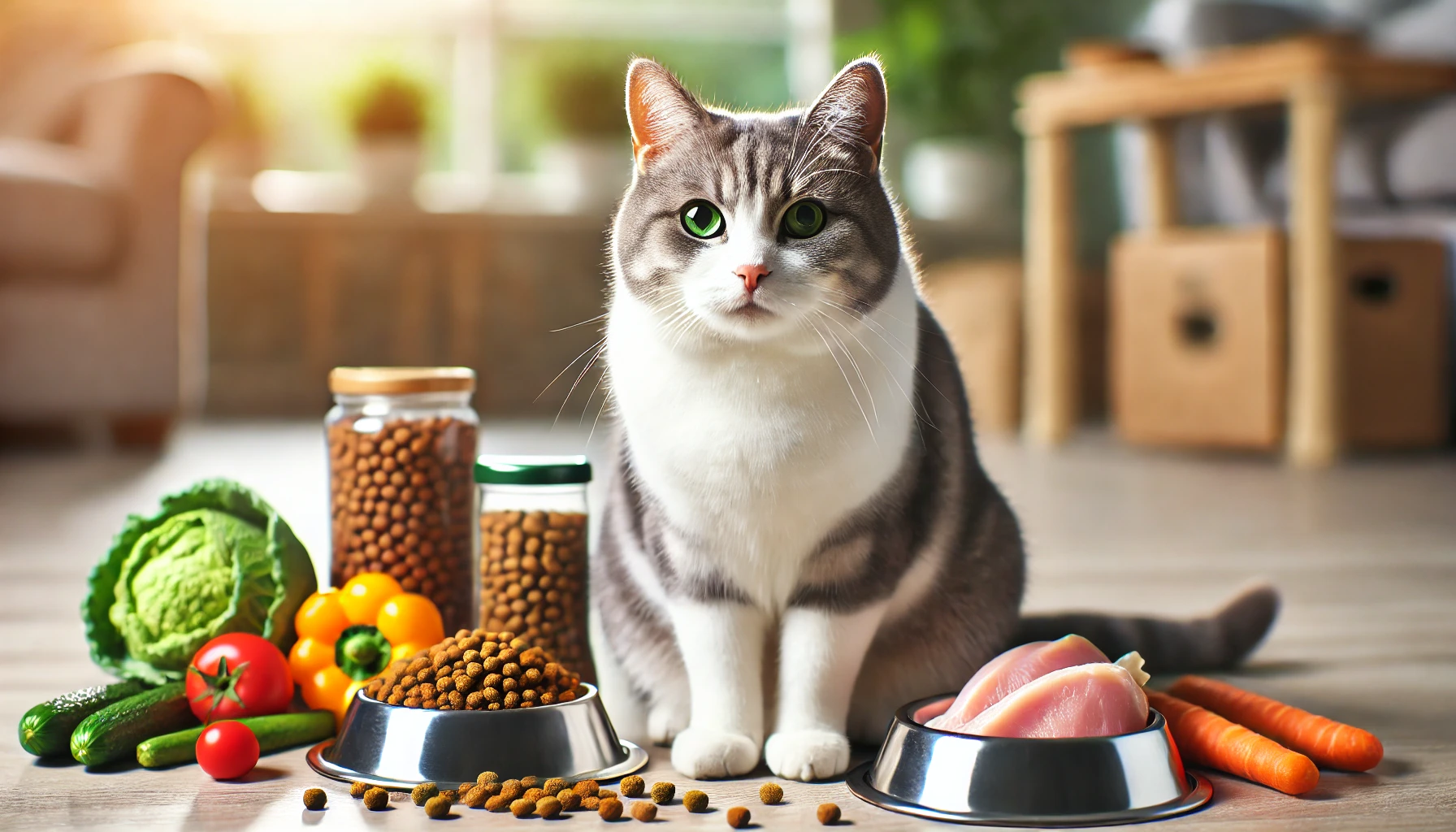
Why a Balanced Diet is Essential After Switching to New Cat Food
Once your cat has adapted to their new food, maintaining a balanced diet is essential for long-term health.
Regularly monitor your cat’s behavior and physical condition to ensure the new diet continues to meet their nutritional needs.
Consider supplementing their diet with healthy treats and adjusting their food as they age to support their changing requirements.
This thoughtful approach to diet management will help your cat thrive at every stage of life.
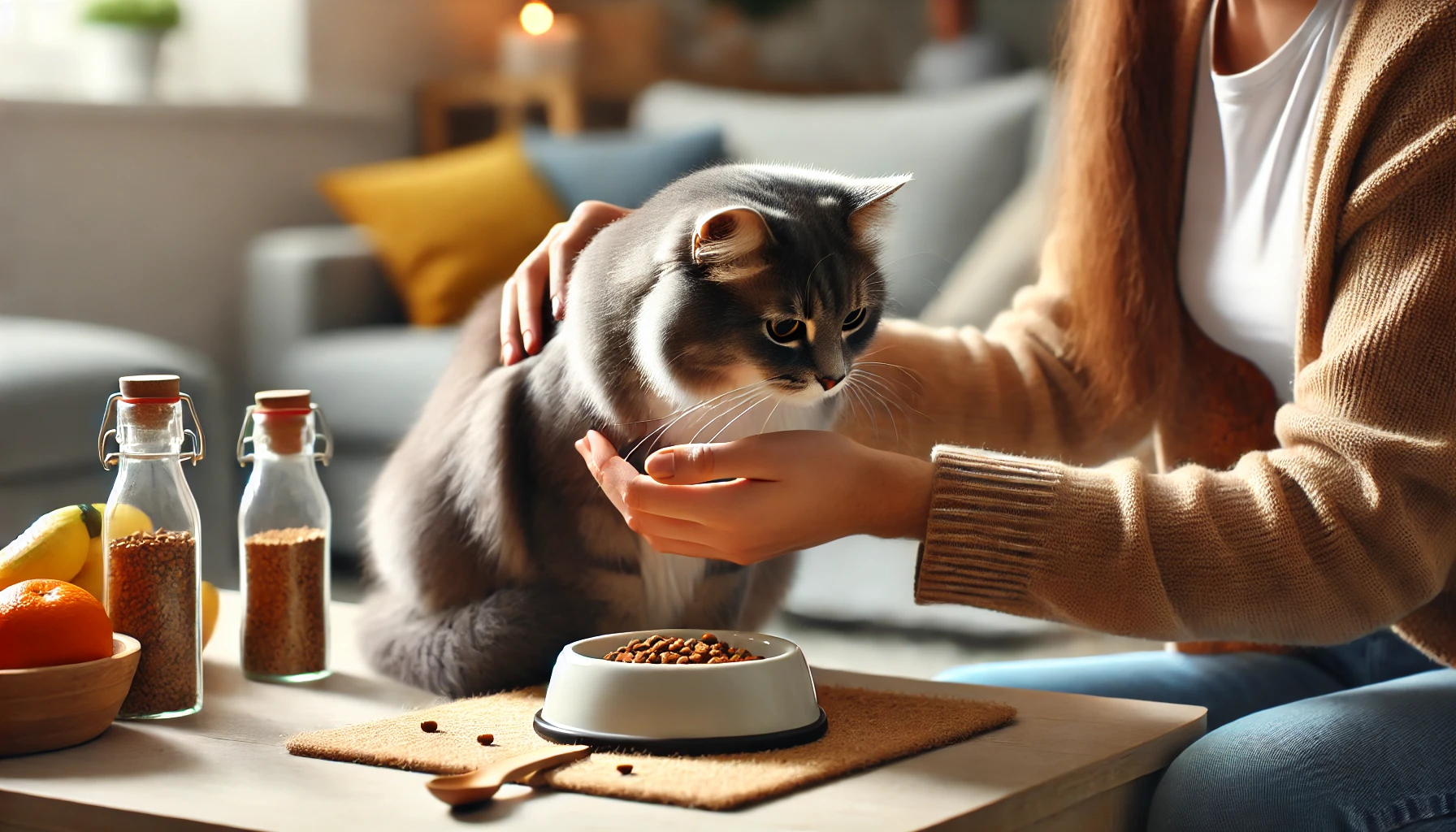
Staying Attentive to Your Cat’s Needs
Your role in your cat’s health doesn’t end after the food transition.
Be proactive in adjusting their diet as needed and stay attentive to any signs that indicate the new food might not be a perfect fit.
Regular checkups with your vet, coupled with your own observations, will ensure that your cat’s nutritional needs are continuously met as they age and their lifestyle changes.
By following the guidelines outlined in this article, you can confidently transition your cat to new cat food, knowing that you’re supporting their overall well-being and fostering a long, healthy life.
Take your time with the transition and monitor your cat closely to ensure a successful switch to new cat food.
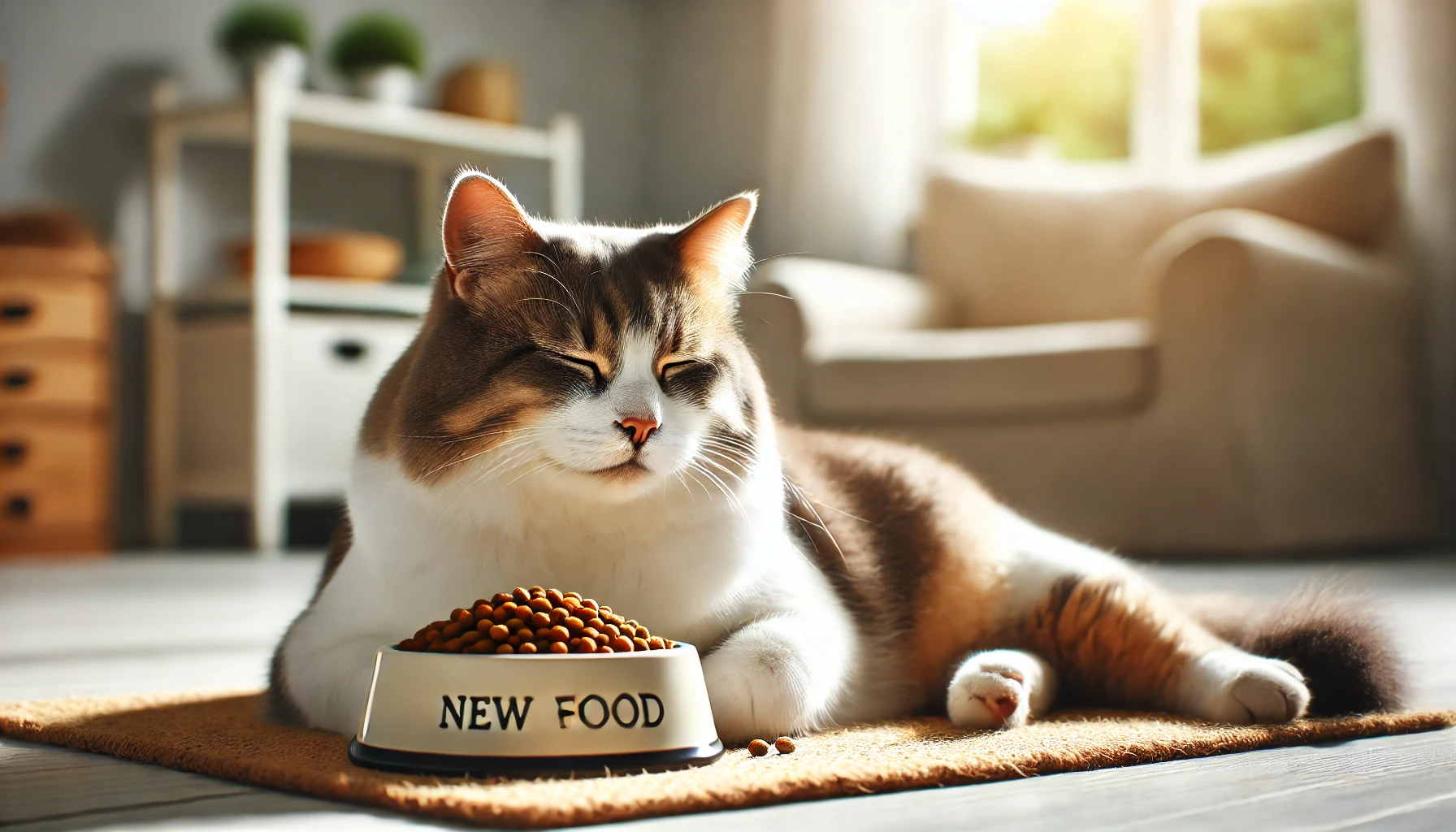
Conclusion: Ease into the New Cat Food
Transitioning to new cat food is one of the most important aspects of aftercare and well-being for your pet.
Whether it’s for health needs, age, or simply to provide better nutrition, it’s essential to take time to plan and implement the transition with care.
The key lies in understanding your cat’s specific dietary needs and closely observing their behavior.
With proper attention, this change can be made smoothly and without unnecessary stress.
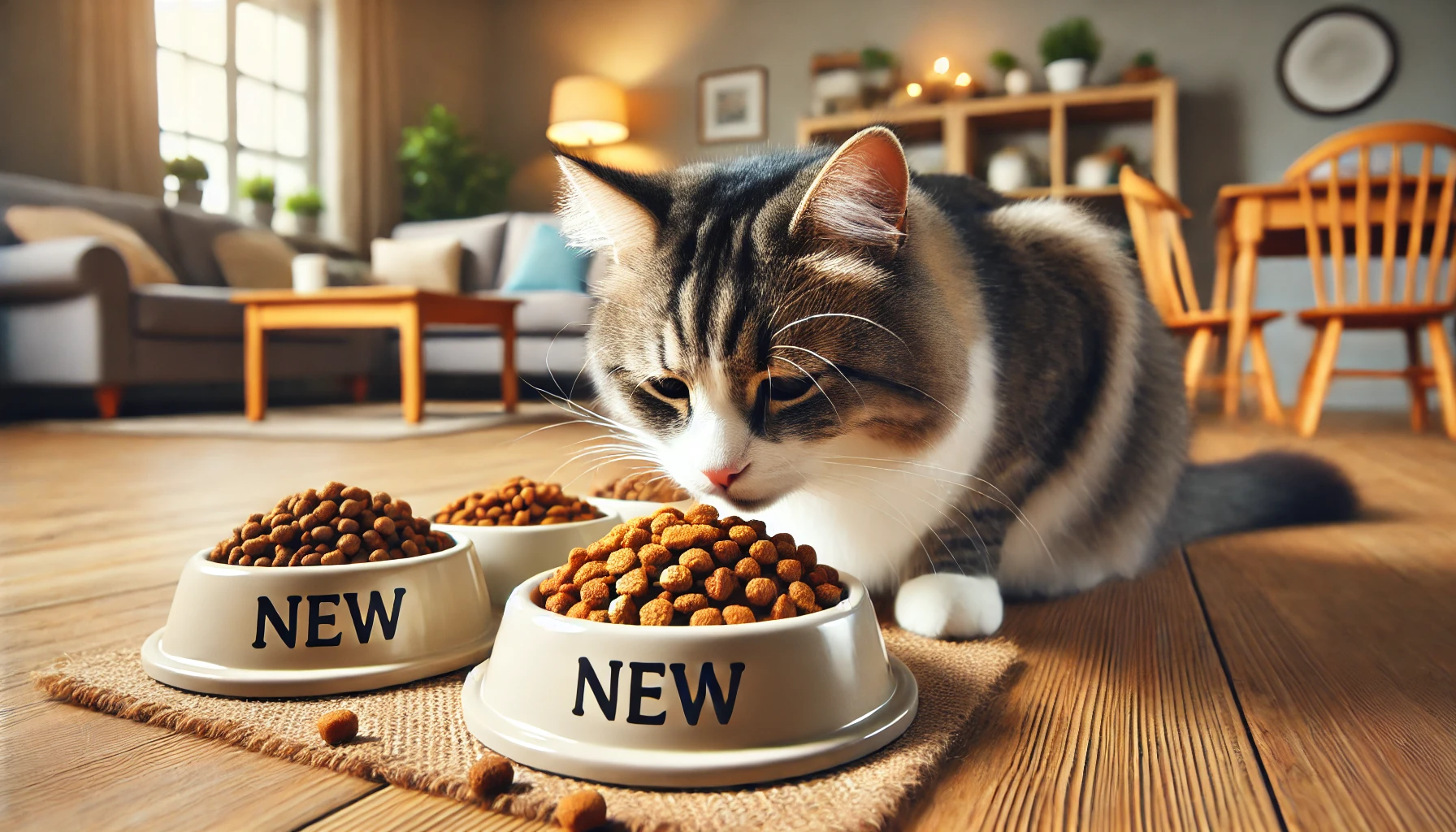
Key Steps to a Successful Transition
Here are some important steps to follow to ensure the transition to new cat food is smooth and less stressful:
- Assess your cat’s current diet and nutritional requirements, taking into account their age, activity level, and any existing health issues.
- Use the 7-day transition method to gradually mix the new cat food with your cat’s current food to prevent digestive issues or food refusal.
- Monitor for signs of food intolerance or allergies, such as vomiting, diarrhea, or skin problems. If necessary, consult your veterinarian.
- Read cat food labels carefully and choose products that meet AAFCO standards, include a high-quality protein source, and are free from artificial additives.
- Consult your veterinarian for personalized recommendations, especially if your cat has medical conditions requiring a special diet.
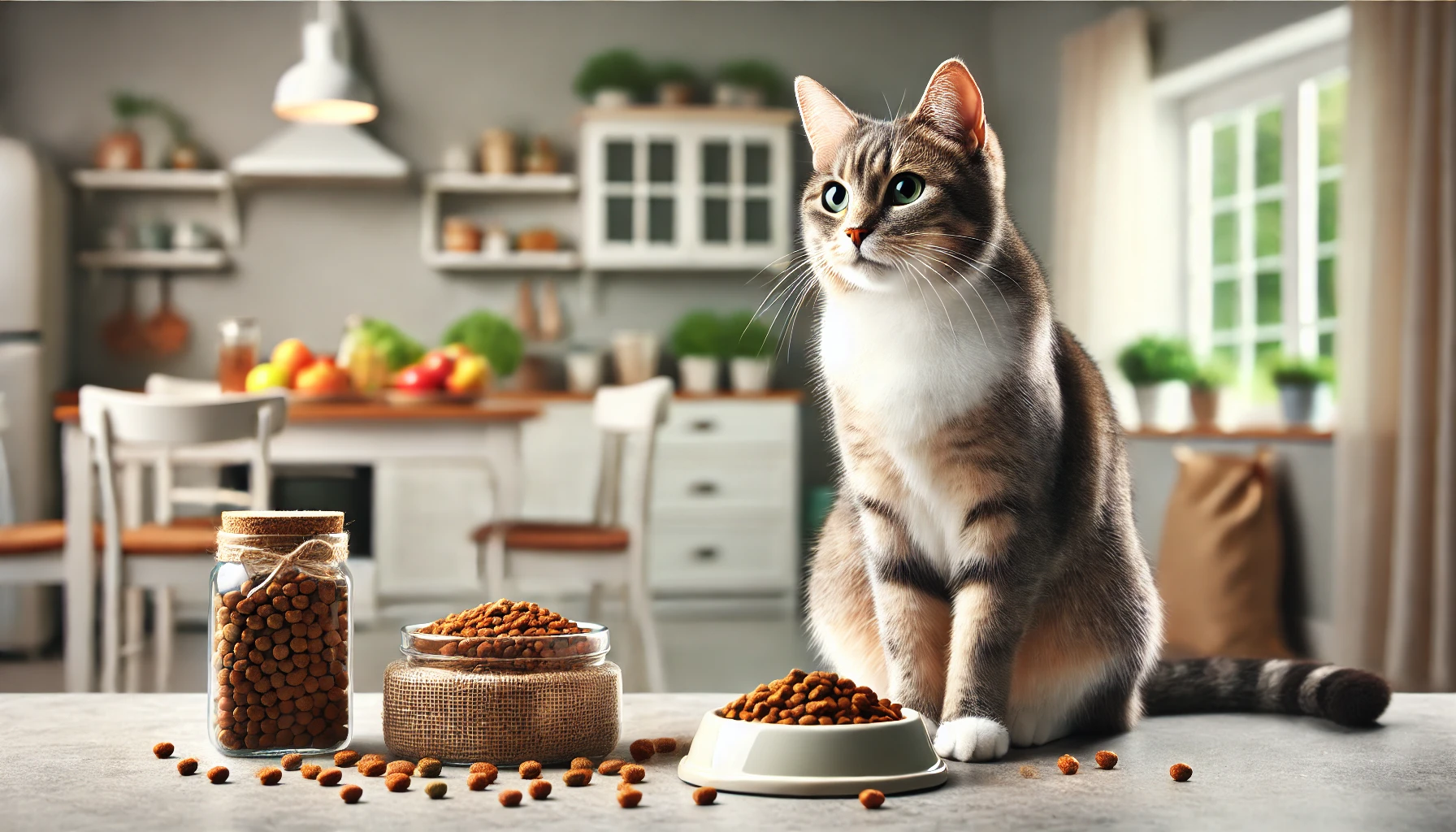
Maintaining Long-Term Health with the Right Cat Food
After transitioning your cat to new cat food, it’s crucial to continue monitoring their health and adjust their diet as needed.
Periodically check your cat’s weight, energy levels, coat condition, and overall behavior to ensure the new diet is benefiting them.
Cats’ nutritional needs change throughout their lives, so be prepared to switch to different foods as your cat progresses through various life stages to keep them healthy.
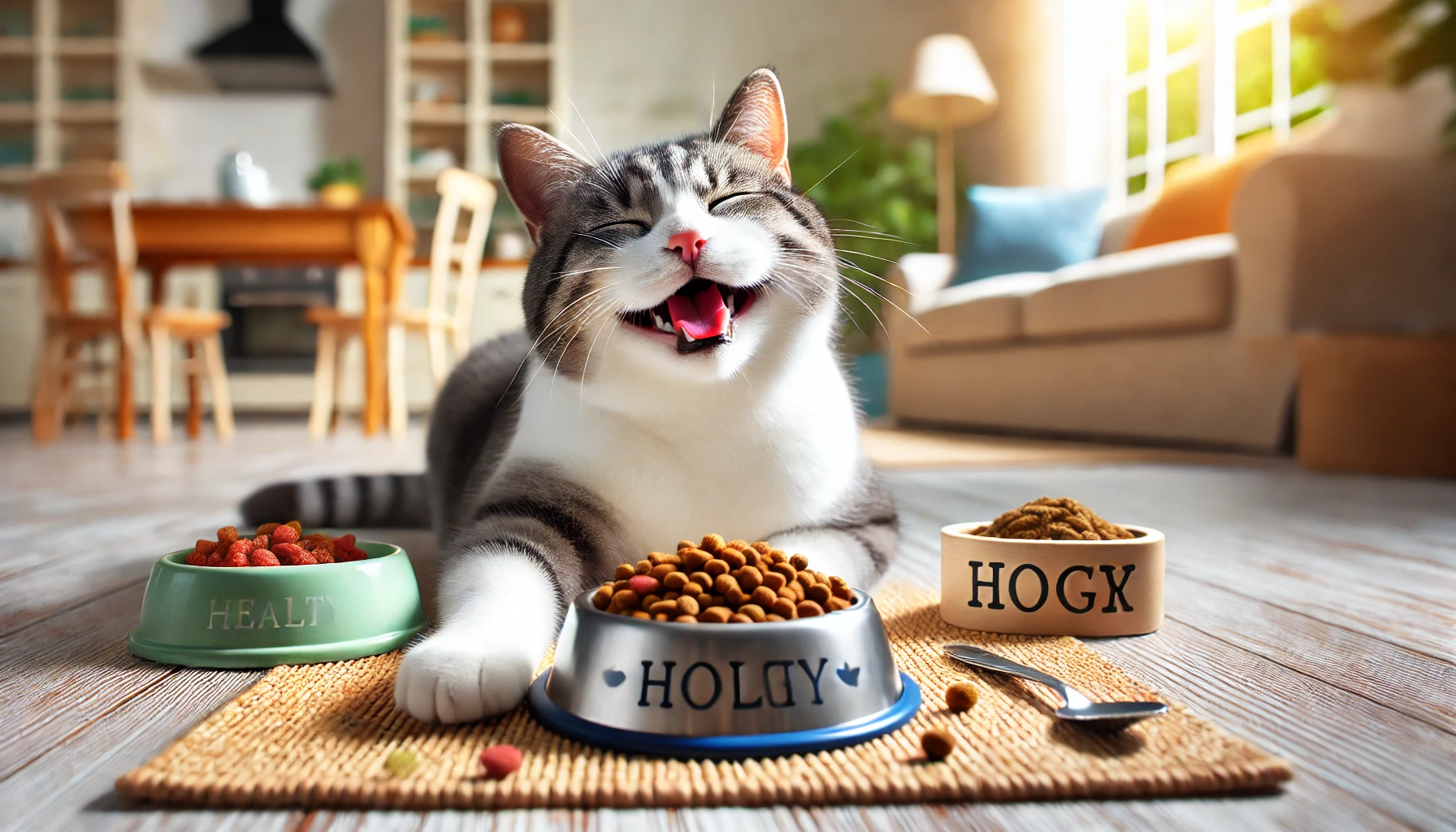
Ensuring a Balanced Diet for a Happy and Healthy Cat
Even after switching your cat to new cat food, it’s important to maintain a balanced diet.
Make sure their food provides all the essential nutrients needed for energy and overall health.
Offer treats sparingly and opt for snacks that contribute to your cat’s well-being.
If you notice changes in behavior, appetite, or health issues, consult your veterinarian for further advice.
By gradually implementing these steps, not only will the transition to new cat food be successful, but your cat will also remain healthy, active, and joyful for many years to come.
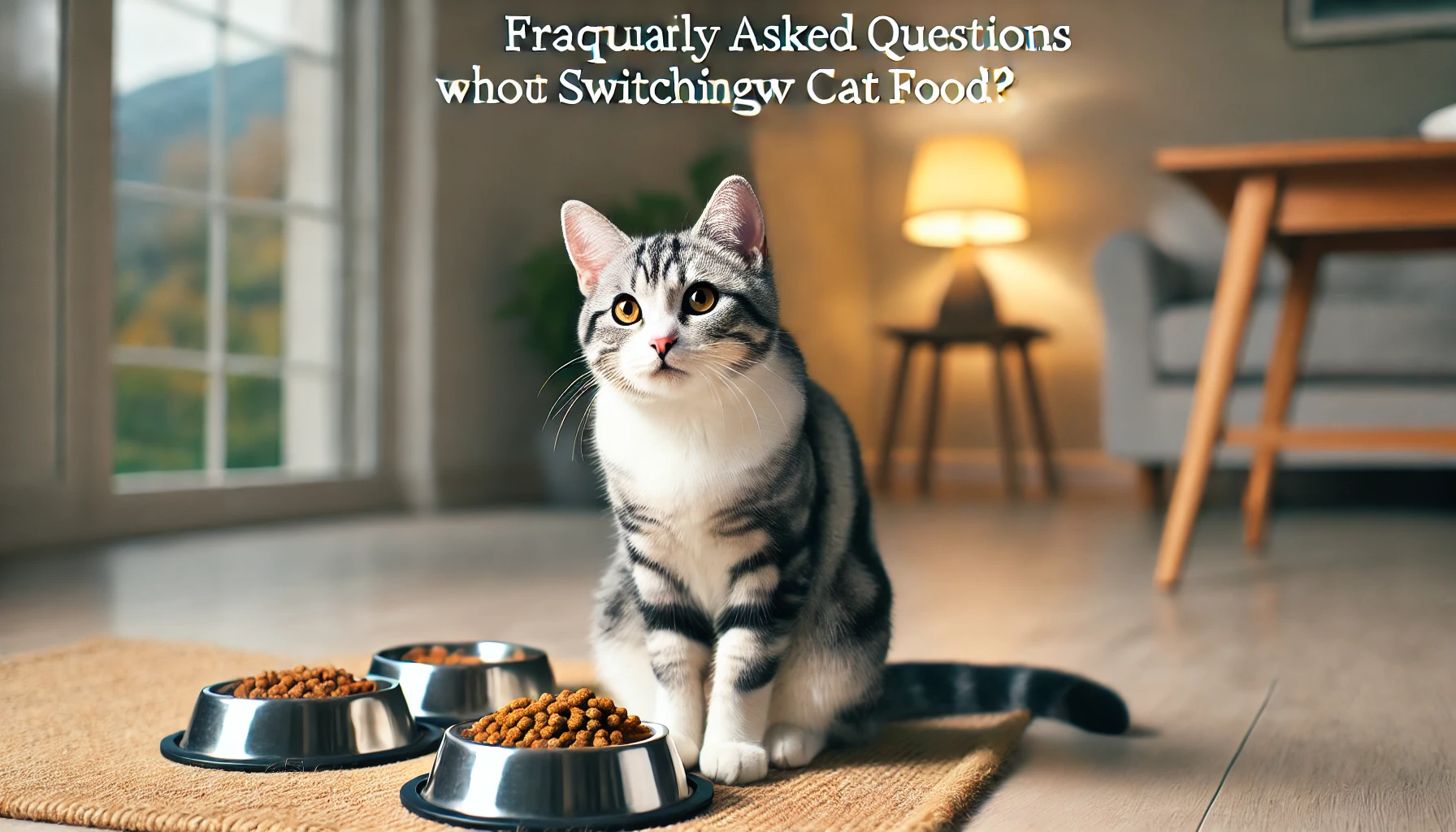
Frequently Asked Questions about Switching to New Cat Food
Switching your cat to new cat food can bring up many questions.
Below are some of the most frequently asked questions to help you understand the process and ensure a smooth change for your feline friend.
How long should I take to transition my cat to new food?
This transition should be done over a period of approximately 7 to 10 days.
Gradually mix the new cat food with the old, increasing the proportion each day to avoid digestive problems or rejection of the food.
What if my cat does not want to eat the new food?
If your cat does not want to eat the new food, try gently warming it to enhance the aroma, or mix a small amount of the old food into the new to provide a familiar taste.
What are the symptoms of a food intolerance in cats?
Food intolerance may manifest as vomiting, diarrhea, excessive gas, or skin irritations.
If these symptoms persist even after transitioning to new cat food, consult your veterinarian for further advice.
Can I switch my cat to grain-free food?
Some cats may benefit from a grain-free diet, while others tolerate grains well.
Check with your veterinarian to determine if a grain-free diet is appropriate for your cat’s needs.
How will I know if the new food meets my cat's nutritional needs?
Ensure the new cat food meets AAFCO standards for complete and balanced nutrition.
Look for high-quality proteins, like chicken or fish, and avoid artificial additives or fillers.
When should I consult my vet during the food transition?
If your cat shows signs of illness such as vomiting, diarrhea, or extreme refusal to eat, or if you suspect allergies or specific dietary needs, consult your vet during the transition process.
How much new food should I mix with the old food each day?
Start with 25% new cat food and 75% old food.
Gradually increase the new food by 10 to 15% each day while decreasing the old food until you reach 100% new food.

